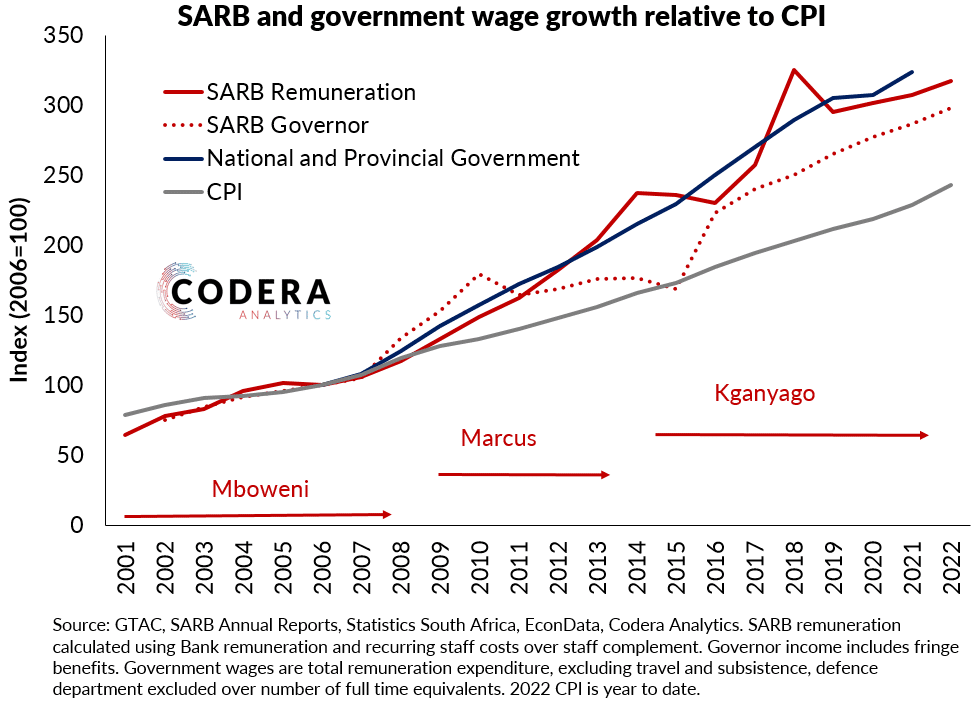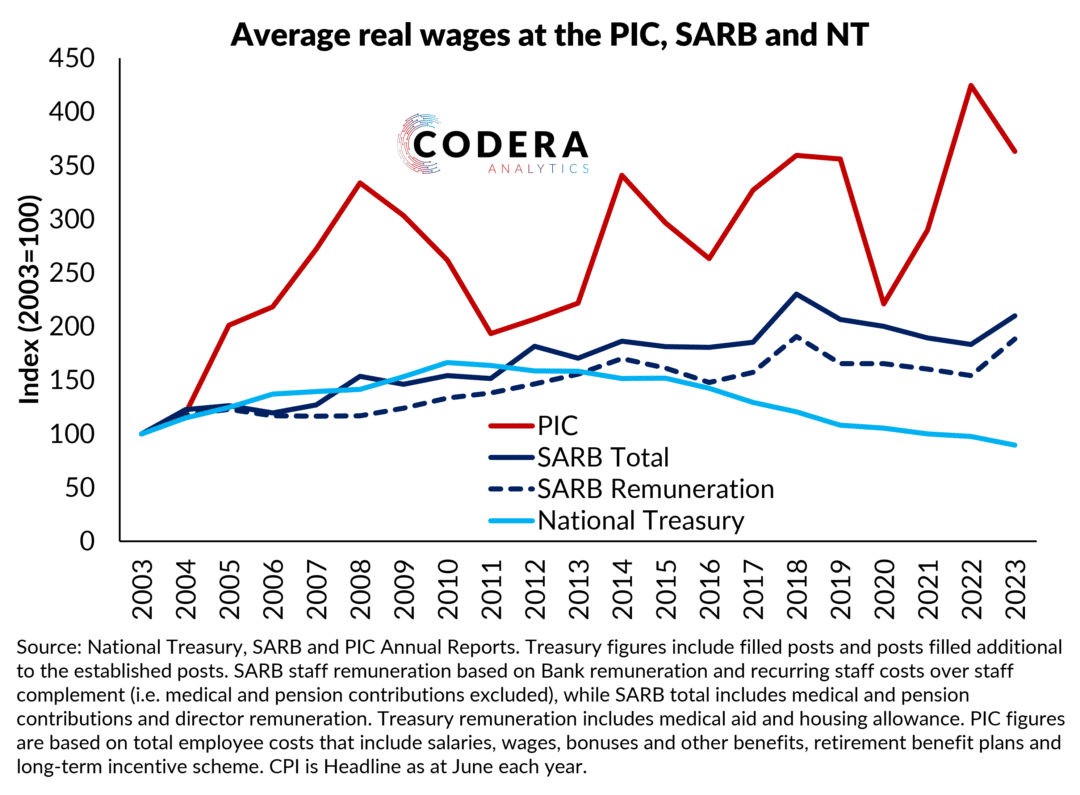Different sources of labour market information paint different pictures of long term developments in average wages in South Africa. Average growth in wages for the total economy is much faster when measured using Quarterly Employment Survey (QES) gross earnings relative to Quarterly Labour Force Survey (QLFS) employment levels, and lower than CPI if calculated using compensation of employees (from the National Accounts (NA)) over QES employment levels. Since 2010, inflation has averaged 5.5%, while average wage growth has been for 6.4% for Earnings (QES) over Employment (QLFS), 6.7% for Earnings (QES) over Employment (QES), 5.5% for Compensation (NA) over Employment (QLFS) and 5.0% for Compensation (NA) over Employment (QES) based on compound annual averages.
These differences reflect differences in the sampling frames for different surveys (e.g. whether the agricultural industry or entrepreneurs are included) or the surveying approaches used to collect data from households and firms. The QLFS, for example, includes those employed, unpaid family workers, agricultural workers, those on unpaid leave, and employees of private households. The QES is based on a survey of non-agricultural firms, excludes the unincorporated self-employed, and includes only workers that are paid. To illustrate differences between the sources we include ratios of NA and QES, and QES and QLFS data, even though the definitions of the total economy differ.

Footnote
See this paper and this note for a more formal comparison across data sources and details around the sampling frames of different surveys.

